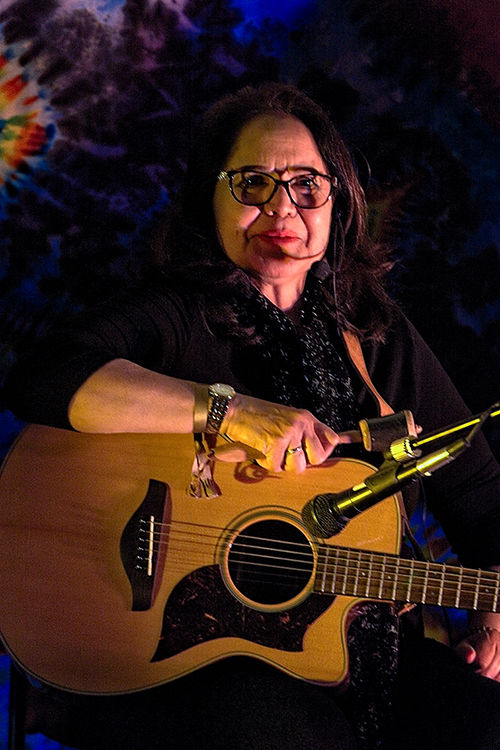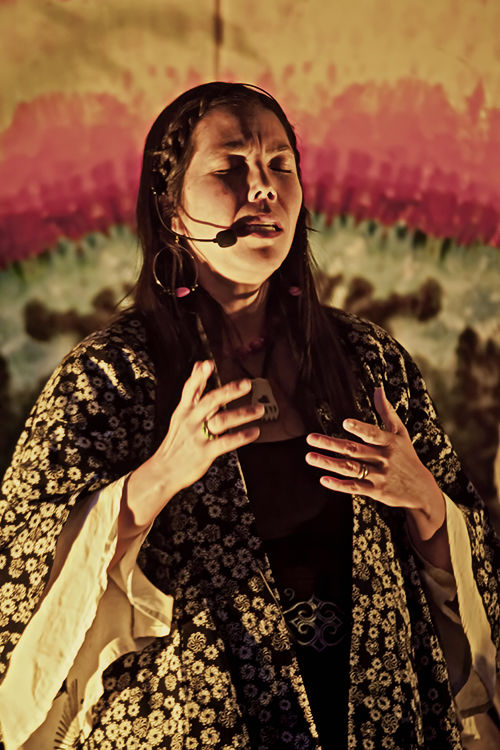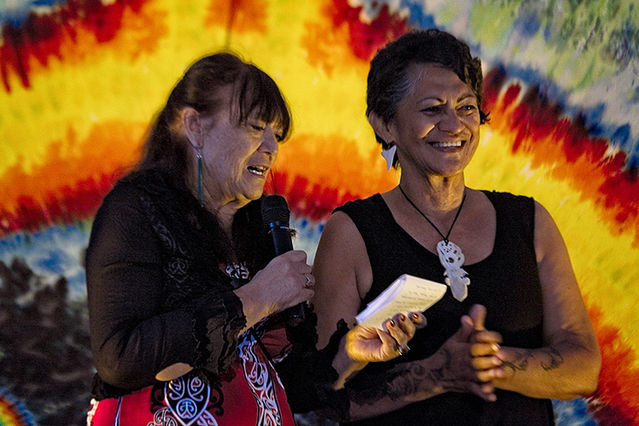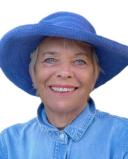Last weekend, I was invited to attend a concert that was part of the five-day Gathering for Humanity in Galisteo, New Mexico, about 35 minutes from Santa Fe. I knew very little about it before I went which, frankly, is the way I like to experience most things.
It was hosted by The Chi Center, which used to be an elegant, rustic spa and resort. Now it is the place where Chinese Master Mingtong Gu teaches and leads retreats in Wisdom Healing Qigong. He also holds retreats around the world and does online classes, so he can reach and teach as many people as possible.
Mingtong’s brand of healing, which is based on the energy of the life force within us, is deep, accessible, and uses sound, meditation, breathing, movement, and connecting to the joy in life. In addition to experiencing Mingtong on stage, I also saw his moves when he let out a string of gleeful giggles and started dancing to techno music.
“This is the kind of healer I like,” I thought. “Open heart. Open mind. Lightness of being.”
For the Gathering for Humanity, Mingtong joined forces with a woman who attendees called “grandmother,” and who envisioned the gathering. Her name is Flordemayo, she comes from Nicaragua, and she is a spiritual healer and seer who is also a keeper and distributor of seeds for future generations. Her way, which she calls The Path, embraces all other spiritual traditions and honors the knowledge and wisdom of indigenous people around the world.
As soon as I arrived, I was introduced to other grandmothers. The way I understand it, there are grandmothers all over the world. They are indigenous women who are leaders in wisdom, prayer, and action. They embody the highest female values of love, wisdom, nurturing, teaching, and connection. They acknowledge each other, support each other, and honor the earth, which gives us all life.
I was looking forward to the concert that took place in the evening in a geodesic dome. The headliner was Grammy award-winning Native American songwriter, acoustic guitarist, and singer Joanne Shenandoah, and her multi-talented daughter Leah. Joanne told the audience how she had been diagnosed with a horrible illness that should have killed her, but, with the help of many, she healed, and was honored to be part of an event that would help and heal others.

Another performer was Madi Sato, whose traditional Japanese singing had an other worldly quality that seemed to lift the audience members out of their seats and transport them to a world where all is in balance, all is calm, and all is infused with the luminous energy of light and love.

“Is Joanne a grandmother?” I wondered. “Is Madi Sato?” I thought back to my own grandmother, who had such a profound influence on my life that I wrote a book, The Spoon From Minkowitz, about tracking down her tiny rural village in Ukraine. My grandmother was perhaps the only loving, embracing, gentle, presence in my early life. Her teachings were simple. She showed me how to make matza meal bagels on Passover by dropping them into a pot of boiling water. She told me I meant more to her than life itself. She was my grandmother, but was she a grandmother?
Moetu Taiha and Eila Paul, two Maori grandmothers from New Zealand, performed what seemed to be to be a female version of a Maori haka. I had seen the hakaperformed numerous times in New Zealand by robust, vigorous Maori men. It’s usually a challenge or a war dance, but in the women’s expert, humorous, powerful performance, it seemed more like an invitation into their culture, a sharing of the rich tradition they come from. The audience was whooping with appreciation when they finished.

“So this must be what grandmothers are like,” I thought.
And then I met a young woman named Angela Lynch, who said she was from the Crystal Earth Project. When I asked her to tell me about the project, she spoke passionately, and in depth about engaging and amplifying the earth’s powerful energies for personal and collective transformation. Suddenly she stopped, looked me in the eyes, and said, “I’m going on too long and making it too complicated. Can we go out for chai when I come back to Santa Fe, so I can try to explain it to you in an elevator pitch?”
I burst out laughing, and I thought to myself, “She is aware, and self aware. She is committed to healing. She is well on her way to being a grandmother.”
As you read these words, I wonder if you are a grandmother, know a grandmother, or aspire to be a grandmother. It seems to me that if you follow a path of healing, honor the wisdom tradition you come from, and live a life in harmony with the earth, you may be well on your way, no matter what age you are, to becoming one of the grandmas.
X x x x
If you want to go to a Gathering for Humanity, the next one will start on May 4, 2019. (http://www.gatheringforhumanity.org)
You can also follow Gathering for Humanity on Facebook. The Chi Center is at www.Chicenter.com. To learn more about Flordemayo: http://followthegoldenpath.org. The organizations that helped with the planning and execution of the gathering: Mingtong Gu and The Chi Ctr; Angela Lynch, Crystal Earth Project: http://crystalearthproject.org; Madi Sato/Tim McLaughlin, Praising Earth: http://praisingearth.org/about/




